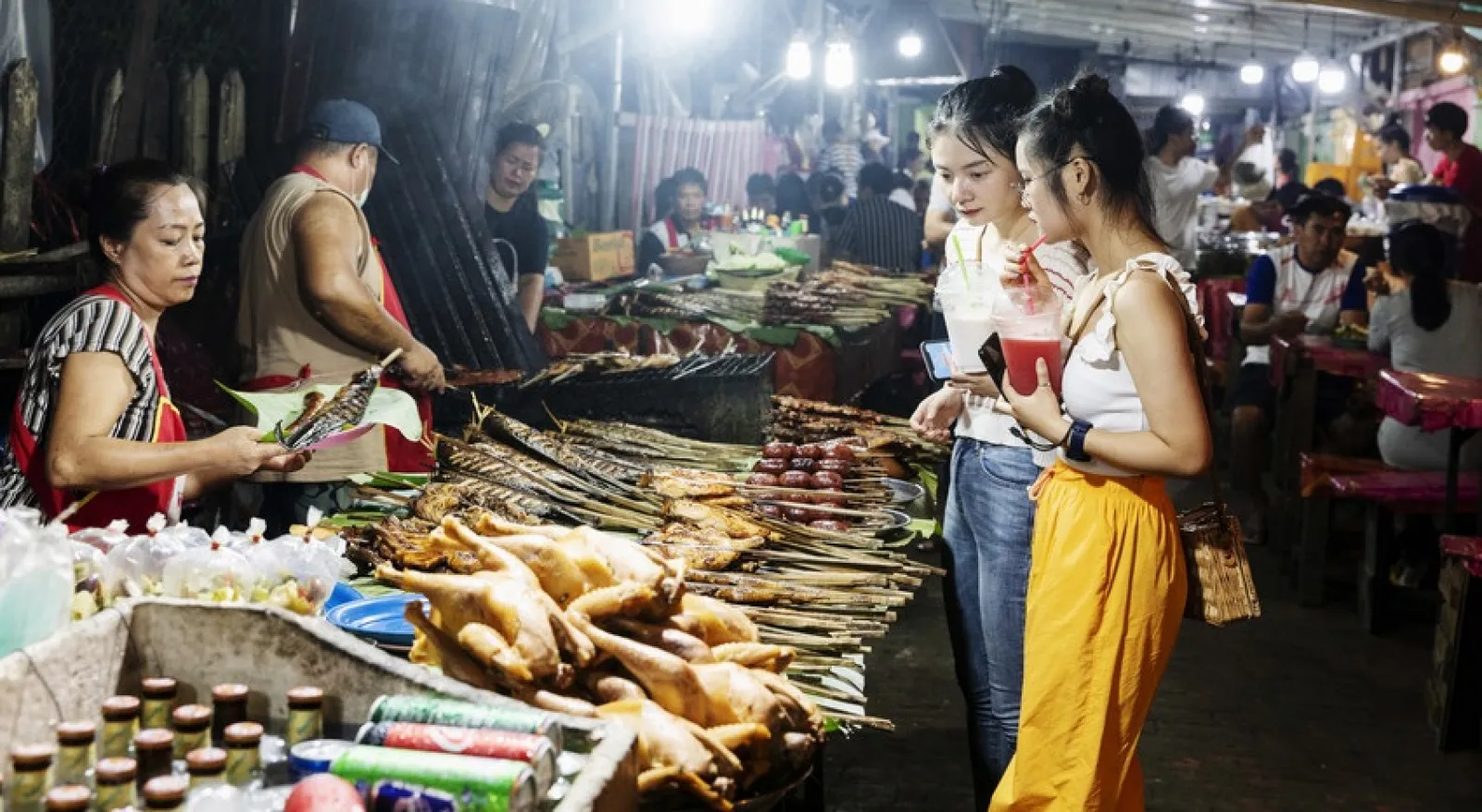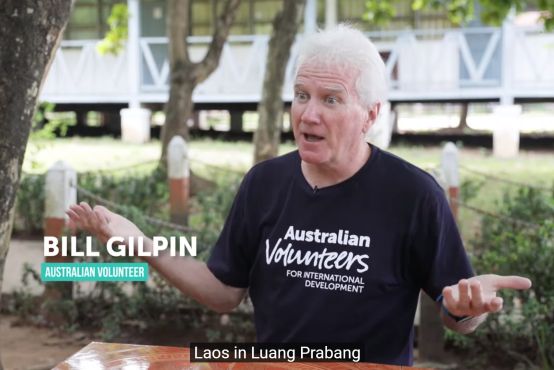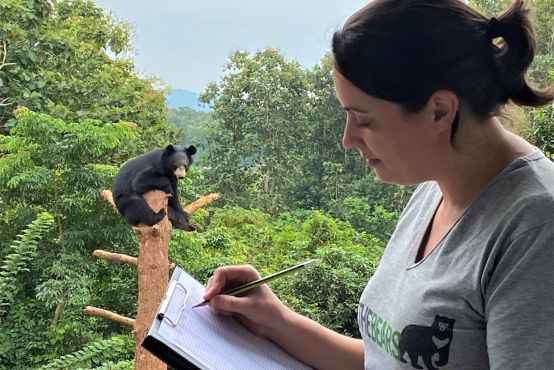
About Laos
Laos lives at the heart of mainland Southeast Asia, bordered by Thailand, Vietnam, Cambodia, Myanmar, and China. While landlocked, the Mekong River flows along much of Laos' western border, serving as the country’s primary conduit for goods and people for thousands of years.
In pre-colonial times, the region that is now Laos was inhabited by various ethnic groups, including the Lao people, and the Khmer Empire, centred in present-day Cambodia. The Lan Xang Kingdom played a crucial role in shaping the Lao identity. In the late 19th century, Laos was colonised by France as part of French Indochina. The French presence significantly impacted the region. Laos gained independence from France in 1954.
The country was heavily impacted by the Second Indochina War (also known as the Vietnam War). Throughout the war, over two million tonnes of ordnance were dropped on the country. The conflict left Laos deeply scarred, and today all 17 provinces, and approximately 25% of villages suffer from various degrees of unexploded ordinance contamination. Accidents still injure and maim approximately 300 people every year. In 1975, the Pathet Lao communist forces took control of the government, establishing the Lao People's Democratic Republic. Since then, Laos has experienced economic development.
Culturally rich and diverse, Laos has a population of 6.8 million people who share 49 distinct ethnicities.
Laos has three broad groups based on ethnicity and location. Approximately half of the population is Lao Loum (Lowland Lao or Lao Tai); around 10% are Lao Theung (upland Lao, who are predominantly people of Mon or Khmer ancestry) and another third are Lao Soung (mountain Lao, commonly referred to as 'hill tribes' and include the Hmong, Yao (Mien), Akha, and Lahu). The country is also home to sizeable Vietnamese and Chinese communities.
Living standards in Laos have improved over recent years, and according to the UNDP the poverty rate dropped from 46% in 1993 to 18% in 2019, partially due to rapid growth in gross domestic product.
Tourism is a key economic driver, as Laos boasts three UNESCO World Heritage sites: the town of Luang Prabang, Vat Phou (Champasak) and the Plain of Jars (Xiangkhouang).
Australian volunteers have supported a wide range of partner organisations in Laos to achieve their development goals since 1986.
Learn more about the Australian Volunteers Program's work in Laos.
Key things to consider about volunteering in Laos
- Laos can get very hot and humid. The country has a tropical climate with distinct wet and dry seasons. The wet season brings heavy rains and very high humidity.
- Cultural sensitivity and awareness with every interaction. Be aware of the country's history, and approach conversations about history and politics with sensitivity. Be aware of the importance of Buddhism in Lao society.
- There is a different medical care standard to Australia. Hospitals may not be as well-equipped as those in Australia.
- There are different rules on the use of social media for the expression of personal or political views. Volunteers need to be aware of the laws relating to these issues.
- Laos is a nature lovers paradise. Laos is a beautiful country with a diverse landscape of mountains, forests, and rivers.
Volunteering in Laos
Meet Australian Volunteer Bill, who shares the challenges of starting a volunteer role and provides advice for other volunteers.

Culture and religion
Laotian culture is deeply rooted in Theravada Buddhism, shaping various aspects of daily life and societal customs. Elders are treated with great respect and children are responsible for their parents’ wellbeing as they enter old age. Many children will live with their parents until they marry, and large extended families can live under one roof.
Gender equality has not been fully achieved in Laos and gender wage gaps continue to exist. In government women rarely hold positions higher than mid-management and hold less than 25% of seats in the National Assembly.
Laos is traditional when it comes to romantic relationships; living together out of wedlock is frowned upon and being seen in public with a member of the opposite sex will attract attention from the community.
Religion
Laos is approximately 60% Theravada Buddhist. The rest of the population is largely animist, following their unique ethnic traditions and practices. Other religions, including Islam and Christianity, represent a combined total of less than two per cent of the population.
Buddhist monks will be easily recognised by their saffron and orange clothing. Monks seek alms every day in the morning and will often be seen walking in file with their food bowls. It is important to show respect for these individuals as they carry out their religious obligations.
Dress
Modest clothing is most appropriate in Laos, and is required in religious places such as pagodas, temples, and monasteries. Footwear is almost always removed when entering any building and must be removed before entering all consecrated buildings.
Most Lao women wear a Sinh, a below-knee hand-woven cotton / silk patterned skirt. In government buildings, and at almost all workplaces, women need to wear a Sinh and cover their shoulders, and men need to wear a collared shirt and pants.
Language
Lao is officially recognised and spoken nationwide. English and French are common in work and business settings.
The program provides funding to support language lessons. More information on this process will be available during the onboarding process.
Explore our Pride Guides
LGBTQIA+ program participants must be aware of the country's context before undertaking an assignment. Pride Guides are designed to introduce key issues related to people with diverse SOGISEC and their participation in the program.
Learn more
Day to day life
Climate
Laos has two distinct seasons: a wet and a dry season. Many buildings have air conditioning to combat the hot, humid weather. Evenings in many parts of northern and eastern Laos can range from cool to very cold at certain times of the year.
It is important to note the effects of climate change on day to day life and weather patterns in Laos. This will look different based on location. According to the World Bank, the impacts of climate change are identified as being particularly important to the country’s water and forestry resources, agriculture, energy, and health sectors.
Telecommunications
Internet and mobile access are available throughout the country, however reception and signal strength can be unreliable, even in large cities.
Food and dining
Laotian cuisine is characterised by flavourful, spicy and aromatic dishes, often featuring a combination of fresh herbs, spices and sticky rice. Common ingredients include lemongrass, galangal and fish sauce, creating a unique culinary experience. While traditional Lao cuisine can be vegetarian-friendly, individuals with dietary restrictions should be cautious of hidden fish-based ingredients, as fish sauce is a staple in many dishes.
Drinking is a large part of Lao culture, and beer and rice wine are inexpensive.
The main cities have international supermarkets and people with dietary requirements, such as vegan, vegetarian, and gluten-free, will be able to find food to meet their needs.
Accommodation
Volunteers will be supported to find suitable accommodation upon arrival in Laos. In most assignment locations, volunteers usually live in furnished apartments in buildings within the CBD.
Find out about our in-country allowances.
Transport
In Vientiane and other big cities, public transport is limited and unreliable, the most common and cheapest form of transport for volunteers is a tuk-tuk or taxi.
Ride-sharing apps are the most popular and secure way to travel within main cities and are quite affordable.
Bicycles are a good option if you want to make your own way around, but be aware they often go missing. Walking is generally safe; however, many people do not walk due to weather conditions.
Motorbikes can be purchased or hired, but it's essential to hold an Australian motorbike license and be covered by insurance. Lao has one of the worst rates of traffic fatalities in the world; riding a motorbike is only suitable for experienced drivers.
Giving bears a new lease of life in Laos
Meet Jacqueline Esteban, an Australian volunteer working as a veterinary nurse at Free the Bears Sanctuary in Luang Prabang, Laos.
Learn more
Personal safety
When it comes to your safety and security you must be willing to adapt your behaviour and lifestyle to minimise the potential for being a target of crime. Like anywhere in the world, crime does exist in Laos.
Laos is generally safe for volunteers but following sensible precautions and staying alert is advised. Crime is low, however, it’s still essential to watch out for your belongings.
If applying to take up volunteering opportunities in Laos, it is a requirement that you research your assignment location. Successful applicants may be required to discuss expected living and working arrangements with their recruitment officer.
Personal safety issues constantly evolve, we recommend you keep an eye on Smart Traveller for current information.
Mobility and accessibility
We’re committed to ensuring that international volunteering is inclusive and accessible to Australians from a range of backgrounds, with diverse perspectives, identities and abilities.
To support this, Access and Inclusion Plans are available for volunteers with disabilities to assess their needs and ensure their living and working requirements are fully considered. Indigenous Pathways is an Indigenous-led program that focuses on providing culturally safe, flexible and tailored support for Aboriginal and Torres Strait Islander volunteers.
Before applying for a volunteering assignment in Laos, please do some further research on living in Laos and the organisation you are hoping to volunteer with. Successful applicants will have the opportunity to discuss expected living and working arrangements with their recruitment officer.
Volunteering opportunities in Laos
There are no current assignments in Laos, but we’re always adding new assignments. Stay up to date with our Assignment Alert newsletter or register for the Talent Pool to get a head start on your application. Alternatively, explore all our current assignments.